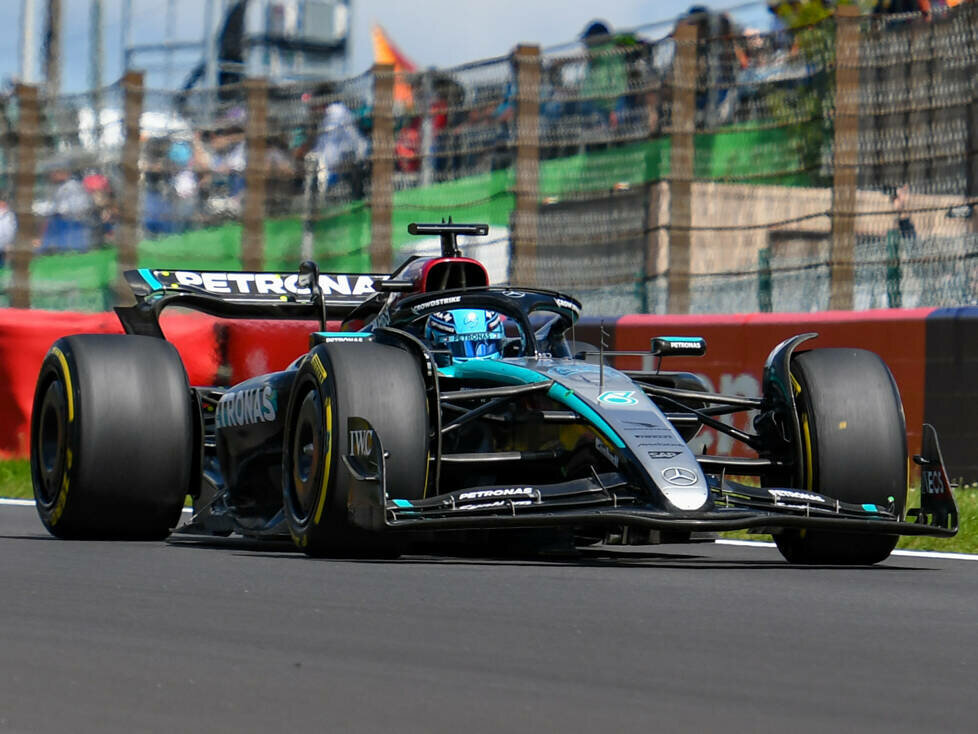Missing lap and too long stint: Did the tires lead to George Russell’s disqualification at the Belgian Grand Prix? This is what Pirelli boss Mario Isola says
George Russell crossed the finish line in first place at the Belgian Grand Prix, but his Mercedes W15 weighed 1.5 kilograms too little when measured after the race. After the disqualification, many reasons were thrown around as to how this could have happened, with tire supplier Pirelli in the spotlight
As the longest circuit on the Formula 1 calendar with 7.004 kilometers per lap, there is no run-off lap at Spa, which means that the drivers have no chance to collect rubber wear that could increase the total weight. Instead, the drivers have to reverse into the pit lane after turn one. But would it even be possible to collect 1.5 kilograms of rubber on the exit lap?
Asked about this, Pirelli Sport boss Mario Isola says: “I don’t know exactly. But if you consider that he was 1.5 kilograms underweight, it could be possible to put those 1.5 kilograms on four tires. When you talk about rubber wear, and if you have a lot of it, 1.5 kilograms means 400 grams on each tire. That’s a number that’s possible. “
Tire wear: car becomes up to four kilograms lighter
Another theory as to why Russell might not have had the necessary weight lies in the strategy. A clear two-stop strategy was planned for the race in Belgium, but alongside Fernando Alonso, Lance Stroll, Kevin Magnussen and Yuki Tsunoda, the Mercedes driver managed the feat of a one-stop variant.
However, the tires lose more and more weight due to wear over the course of a stint. At the end of the race, Russell had completed 34 laps on the hard tire, while the other top drivers had spent a little less than 20 laps on their last set of tires. So did the extra wear caused by the higher number of laps cost too much weight?
When Isola is asked how much weight a tire loses over a stint, he says: “Normally it should be about one kilogram.” Calculated over the entire car, a weight loss of four kilograms of tires over a stint would therefore be possible. A calculation that could have cost Russell the victory?
“It depends on the wear and tear,” says Isola. “If you look at what happened to George, we should measure the wear and tear. The wear is not very high here, but George drove a long stint and if I look at the other tires, the wear was not a big element. “
Did Mercedes still run it too close?
“It depends if the balance is perfect and you wear all four tires, but the volumetric wear was not big here,” the Italian continued. “So sometimes you have a wear profile that tells you that, for example, a tire with a shape that has high wear with the inside shoulder is worn out.”
“But in this case, it’s interesting to see the volumetric wear and we have to wait for the tires after the partc ferme to measure it. The tires from the last stint are still in the Parc Ferme.”
However, it is also a fact that all the other drivers with the one-stop strategy were not disqualified and were over the minimum weight. The mistake can therefore not only be attributed to the missing run-out lap or the excessively long stint. However, if Mercedes had been particularly risky with the minimum weight, these factors could have made the difference.

